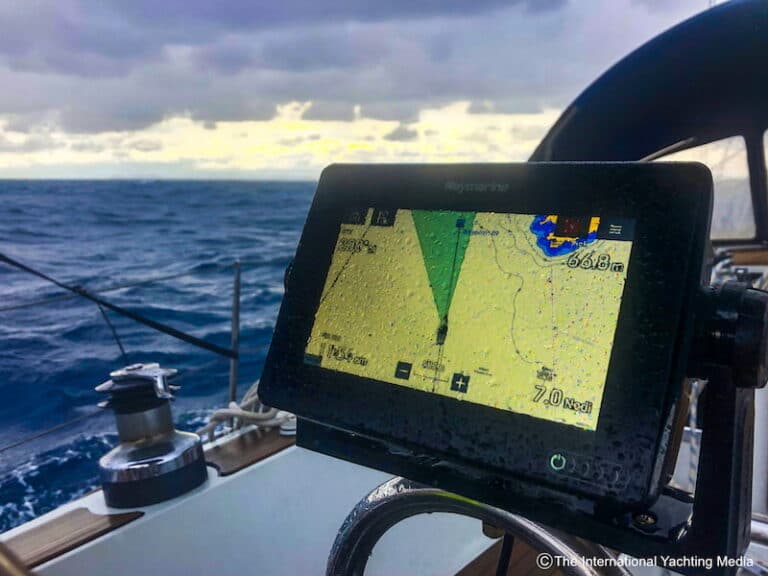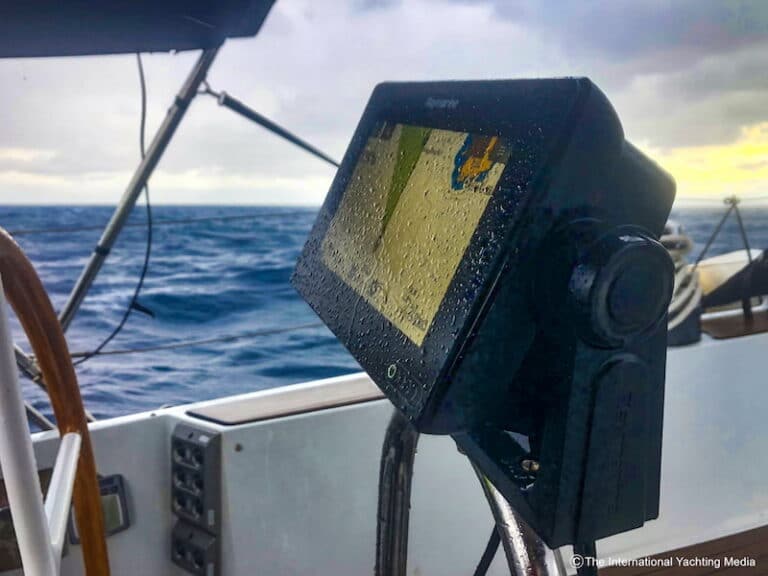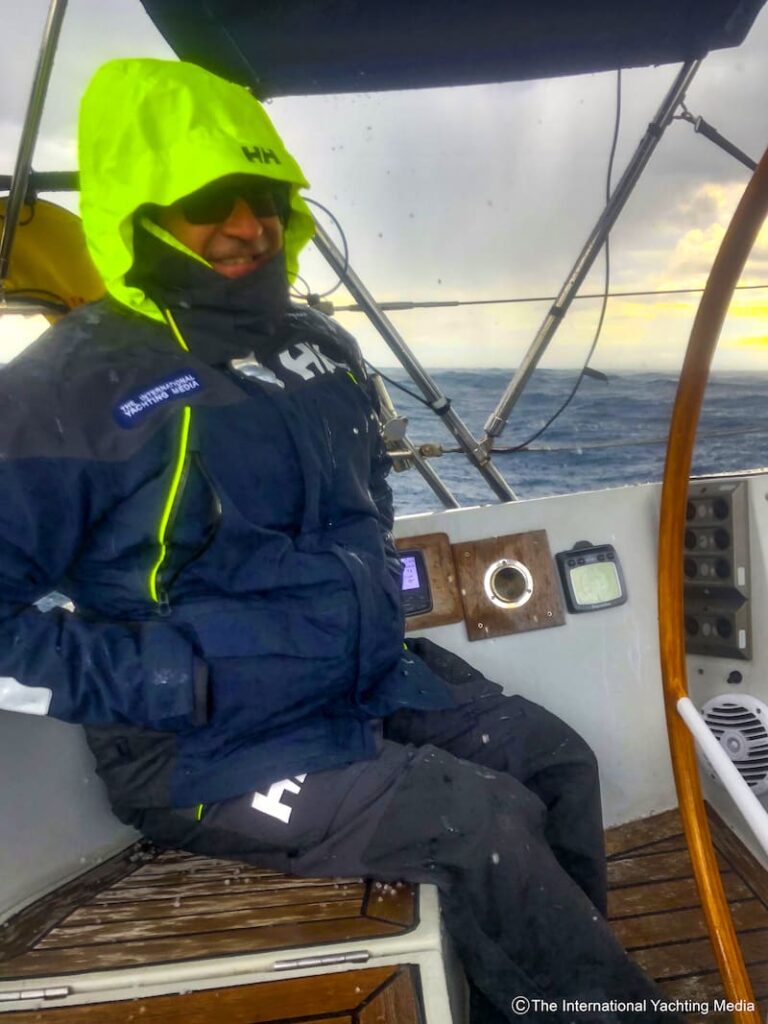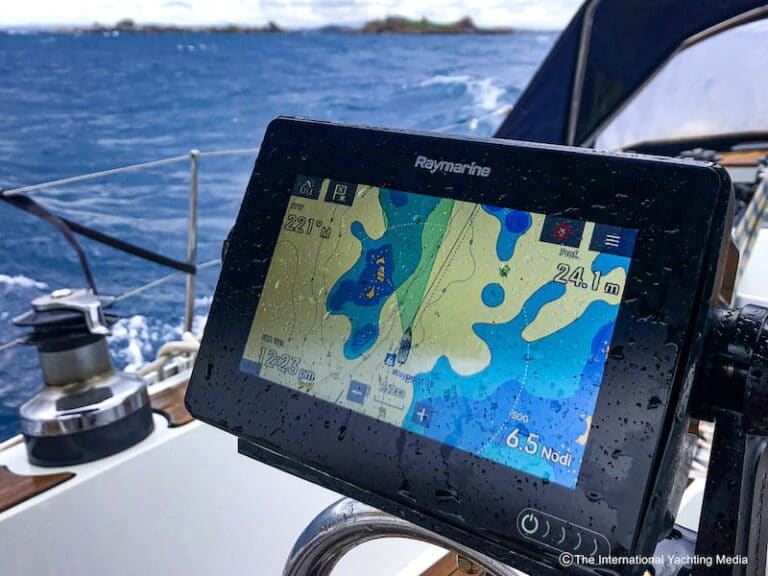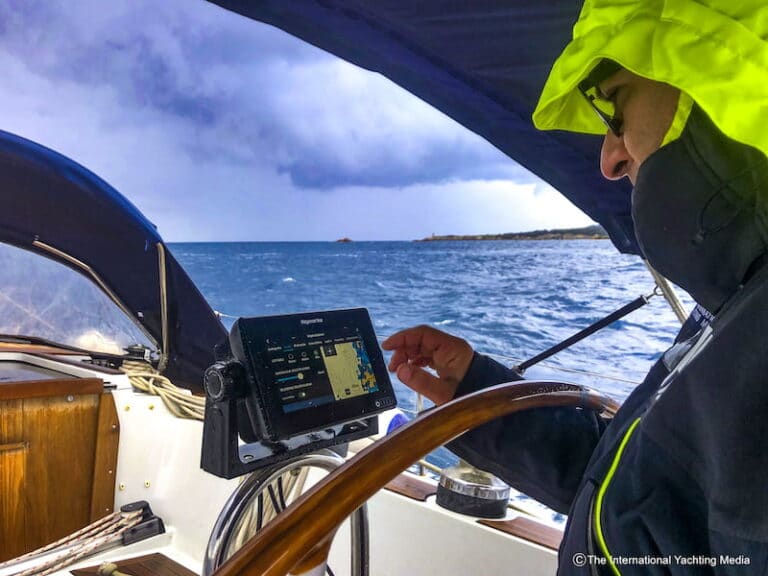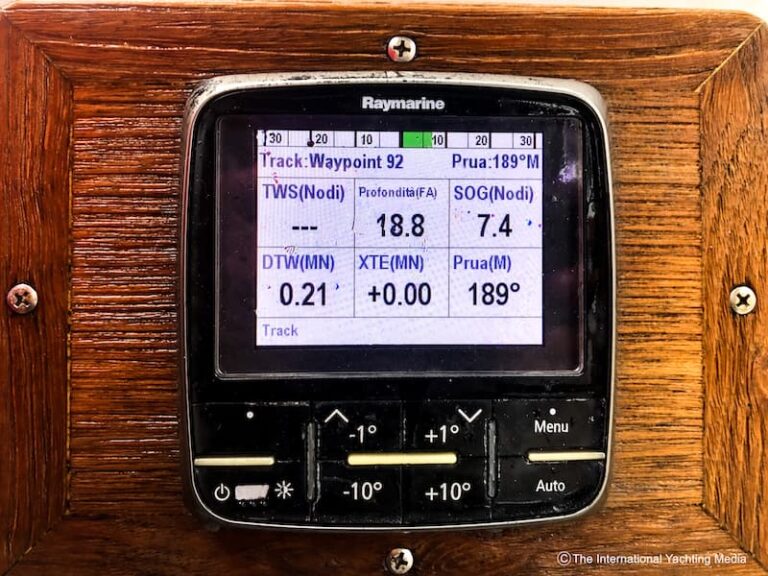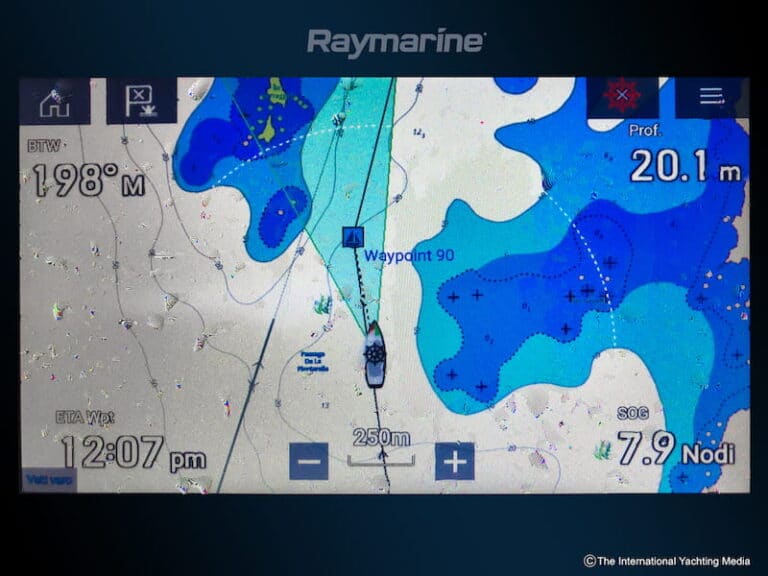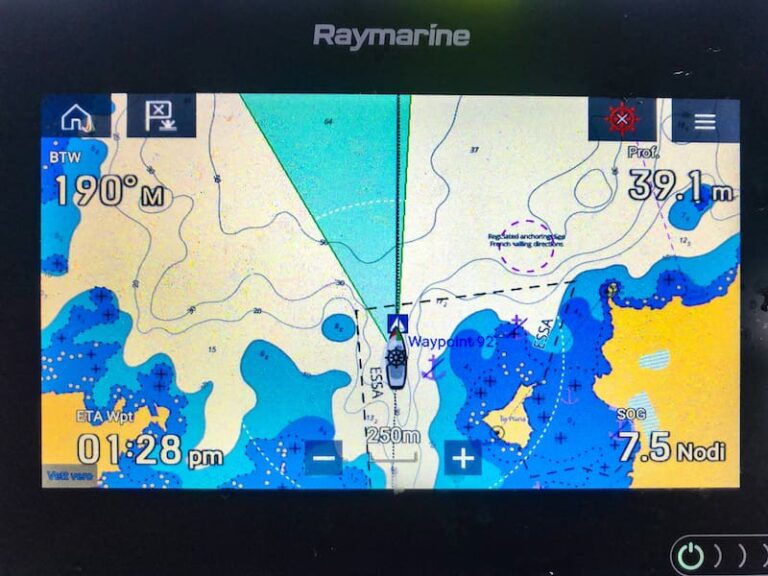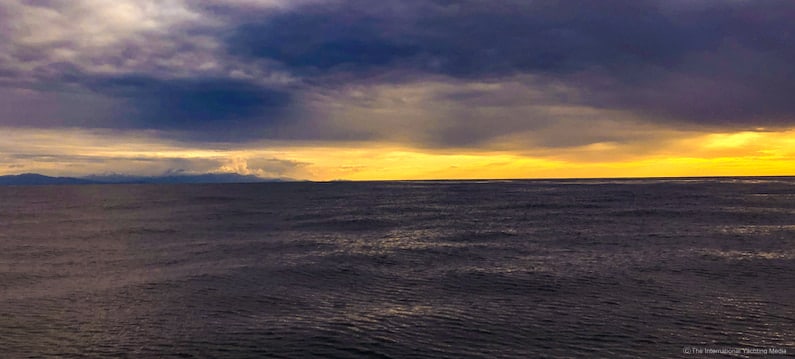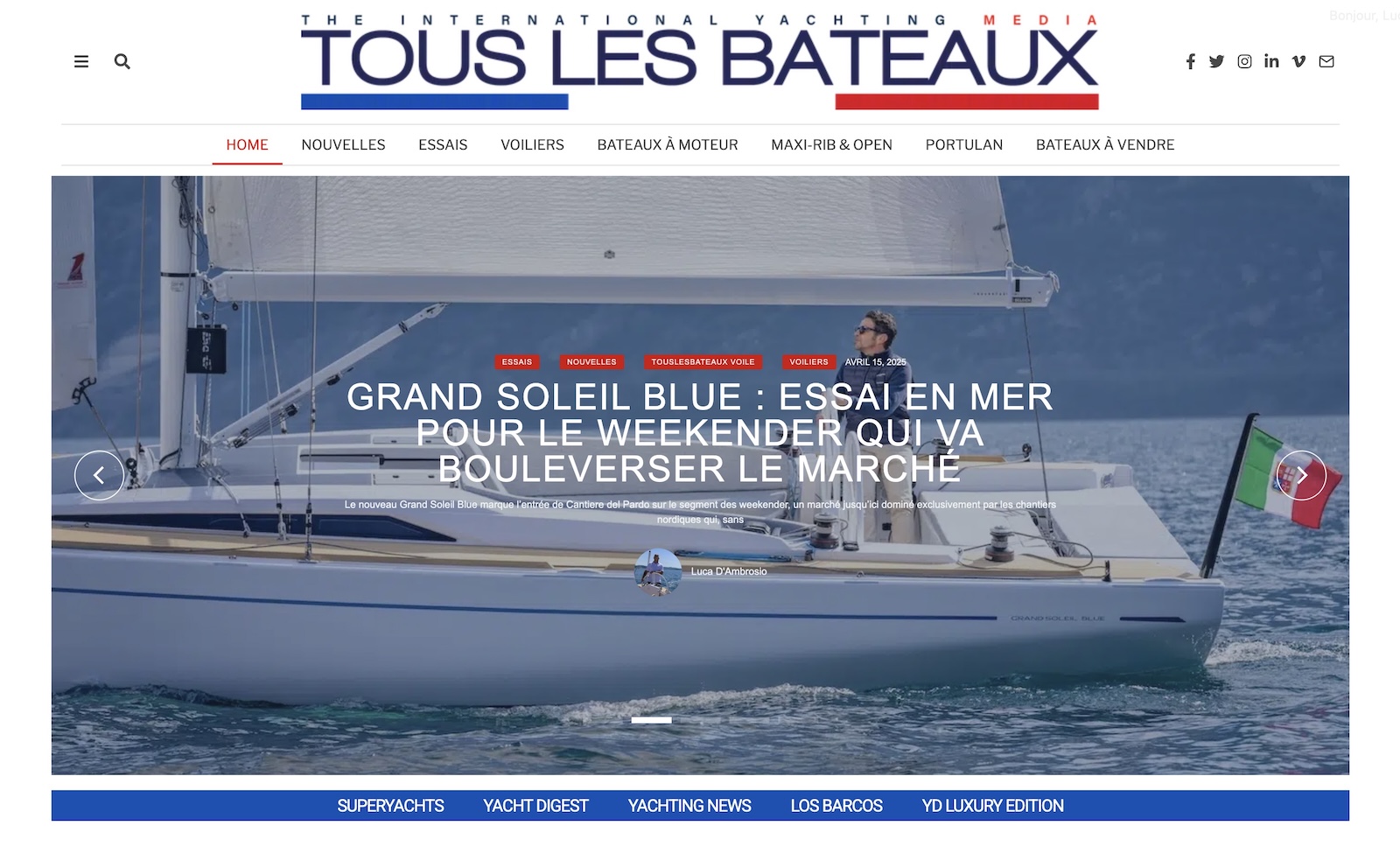A three-year test for the Raymarine Axiom 7: here are the results of our stress test
Three years ago, we started a severe stress test on board the Daydreamer, the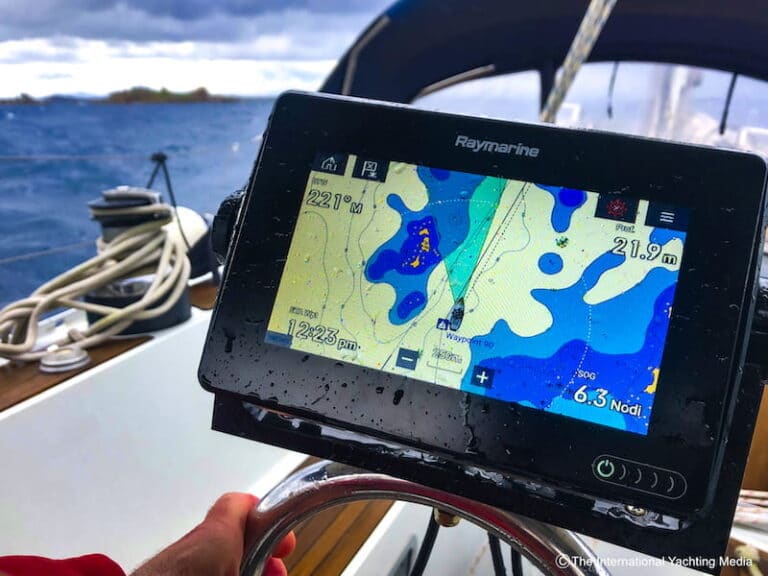 lab-boat of The International Yachting Media. The product on test was the new Raymarine Axiom multifunction system, in its 7-inch version. An important technological upgrade, in terms of both safety, easy handling and, why not, aesthetics because, let’s be honest, these displays are really beautiful.
lab-boat of The International Yachting Media. The product on test was the new Raymarine Axiom multifunction system, in its 7-inch version. An important technological upgrade, in terms of both safety, easy handling and, why not, aesthetics because, let’s be honest, these displays are really beautiful.
The Raymarine Axiom 7 was installed on a bracket positioned on the steering pedestal, without therefore being encased in a protective structure, connected with three new cables, one for the power supply and two for the interface. The installation was perfect for viewing from the helm station, good for the usability of the touchscreen display but quite exposed to shocks and elements, therefore perfect for a severe stress test.
The Daydreamer is always in water, travelling around 2,000 miles between cruises, tests, races and transfers every year. Compared with other boats, she is therefore subject to a significantly more intensive use, where three years probably correspond to more than double the normal wear.
The Raymarine Axiom 7 was always left mounted, and unprotected, for two winters in a row, exposed to sun, cold, water and elements, in order to simulate the harshest conditions which an apparently delicate and expensive tool could be subject to: a “real” owner would never have done that.
In 2019, the Daydreamer joined the Rolex Giraglia race and the Axiom 7 was further updated with the latest version of the Lighthouse operating system which included the new AIS700 hub, the ClearCruise system and the Ray 63 VHF radio device, whose innovative Bluetooth technology finally allows not go below deck.
Time passed but the tool remained current, so much so that, when the new Lighthouse 3 operating system was launched, we discovered that compatibility was always maximum, after installing the Android update of the hardware operating system. The procedure is simple, especially if performed by downloading the software (available for free) from Raymarine website Pl onto an SD card which, placed in the appropriate compartment, allows to update the display and all the accessories on board (wind station, vhf, autopilot, radar, etc …) at once, quite simply.
A final test bench has been offered just these days during our 200-mile winter crossing from Marina di Varazze to Santa Teresa di Gallura, where our Daydreamer is awaited by Continental Marine, our trusted shipyard, the only authorized to “get its hands” on our boat. This crossing is also the final one for the Raymarine Axiom 7, which will be soon followed by the new Axiom 9 Plus for a new test session.
Before setting sail, we update the LightHouse Edgartown software to the 3.13 version and, above all, we install the Raymarine LightHouse Charts, an abolute novelty that we will test in world preview and which we will discuss later in more detail, after installation and testing of the new Raymarine Axiom 9 Plus display.
Raymarine Axiom 7: the final crossing
Here we are: the tool is ready and updated with the new Italy and France maps. We’re ready to cast off and travel 200 miles. The Axiom 7 is mounted on its bracket. I turn it on and realize that its structure is perfectly intact. I do not notice a minimum decay of the materials, much less of the crystal screen. The touchscreen display has the same sensitivity as when it was installed and the image quality is identical. Great!
It’s 06:50 in the morning, the weather is fine, the air is cold, the wind light, the forecasts call for good weather, crosswinds, upwind up to 10/15 knots and moderate waves. I like electronic instruments, so I immediately start “playing” with the new LighHouse operating system that I find very fast and responsive, with instant WiFi interface with the pilot, the radar and the VR camera mounted on the mast.
I plot the course. The auto-routing function is not available yet (but it will come soon), operation is fast and user-friendly and I only have to pay attention to the tracks by zooming the view of the whole route. Once the course is plotted, I turn the Raymarine autopilot on and select the “Track” mode, thus interfacing it with the Axiom 7.
An audible beep signals every course correction, which must been confirmed for safety reasons. At sunset, we reach the Corsican Cape. The Giraglia lighthouse greets us reassuringly when the first east gusts come overwhelmingly: we will spend the night riding waves and sailing quite reefs, with wind peaks up to 38 knots, in the cold, under therain, hail and with two storms really close (in spite of the forecasts!).
The auto rudder performs its impeccable work throughout the navigation, the Raymarine Axiom 7 guides us safely even through the delicate passage of the Pianterella and we are inside the Strait of Bonifacio; we ride swollen waves of the new incoming mistral disturbance and we finally get our destination .
A 3-year test: conclusions
Raymarine Axiom 7 has proved to be an extraordinarily reliable and complete tool. It is easily interfaceable and expandable: a real control hub for the whole boat. The quality of the materials is impressive and, after three years of intensive use and exposure to the elements, is absolutely unchanged compared to the original conditions.
Raymarine Axiom 7 has all the credentials to accompany the most demanding owners during their long years of marine activities. An excellent adventuring or travelling companion for safer holiday experiences.

